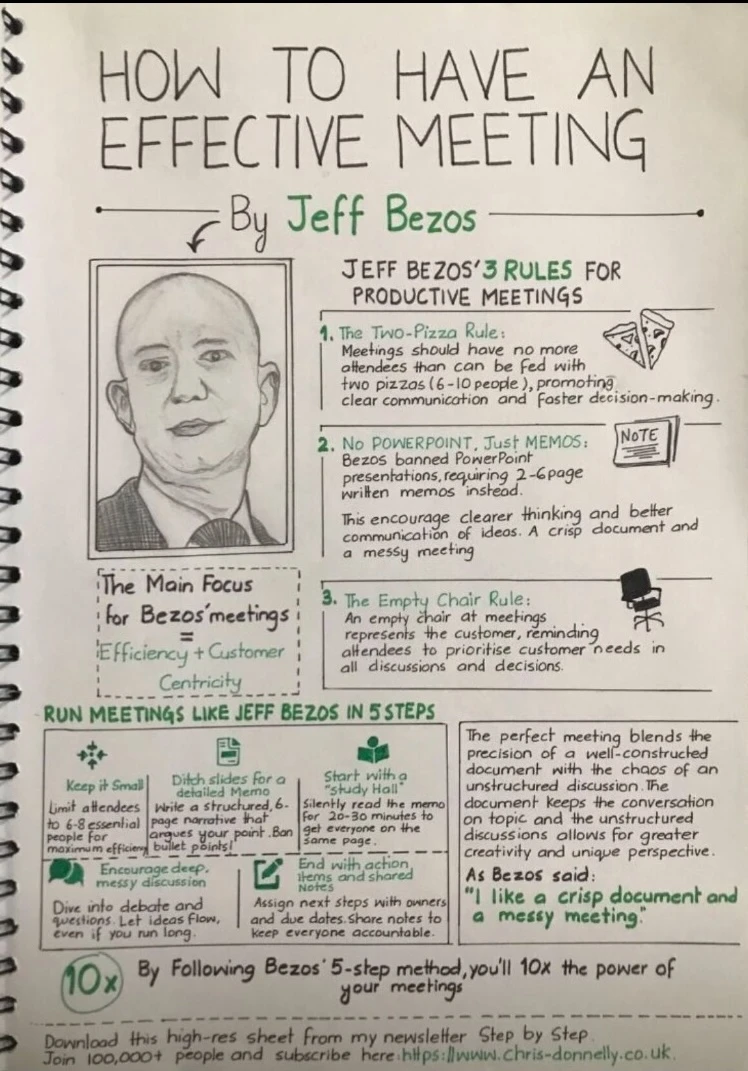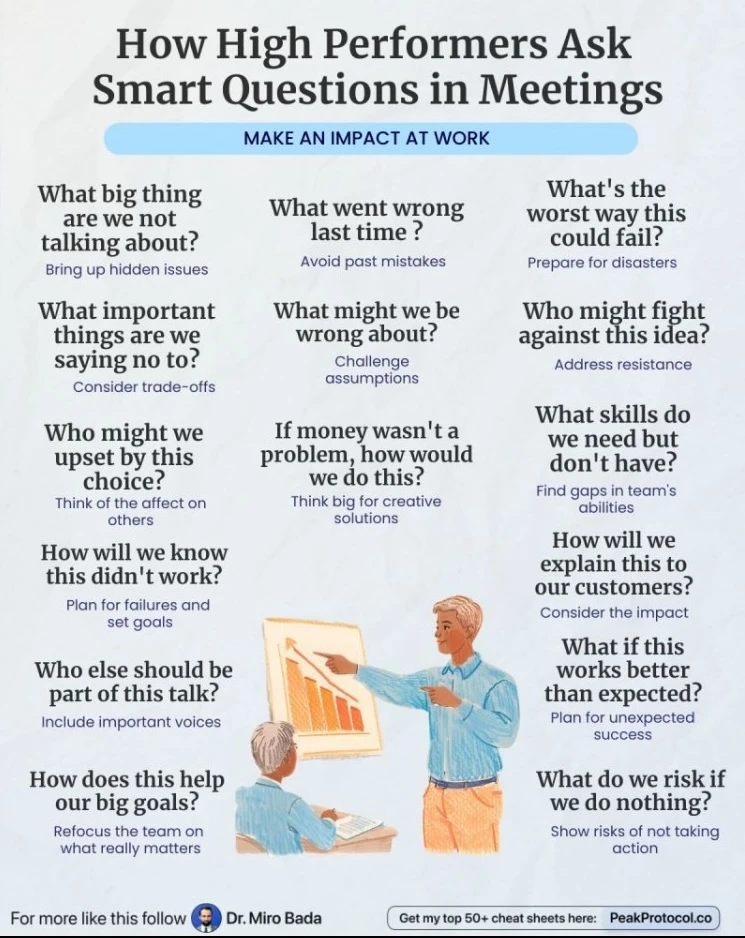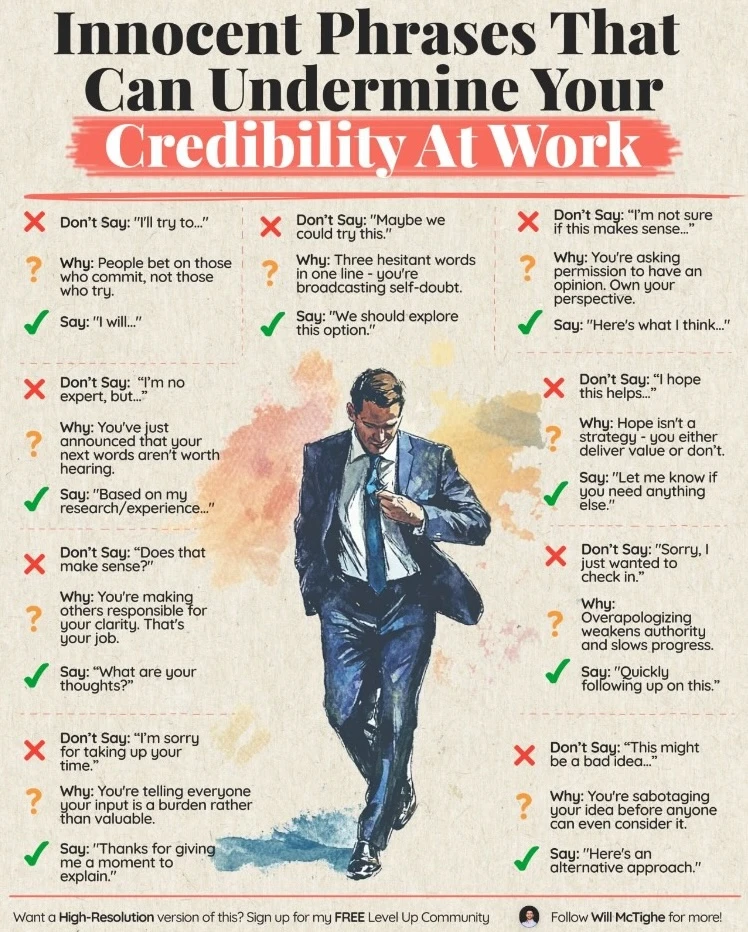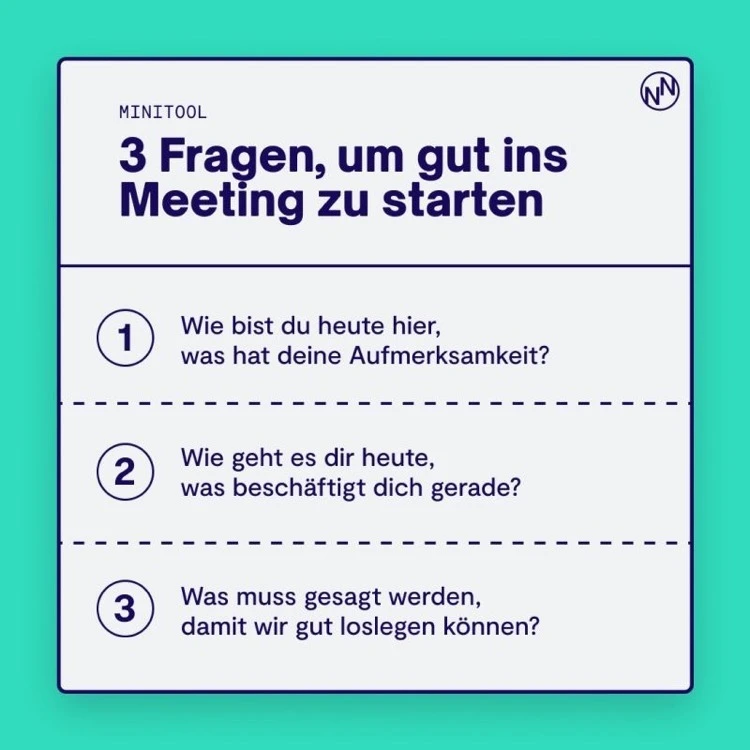Newsletter #007 - A meeting rarely comes alone
Meetings are essential. That's fine if they're good, but what does that mean? My experiences and approaches.

I'm focusing on meetings in the third part of the "Knowledge in Pictures" series. I've (unfortunately) said it often myself, and I hear it even more often:
I was in meetings and calls all day but didn't get anything done.
In my experience, there are three reasons for this, each of which applies individually or, in the worst case, in combination:
- The meetings aren't planned or poorly planned, let alone well executed.
- We don't properly consider the value of the insights gained.
- Fragmenting the day into many small appointments doesn't allow for focus time with flow.
The following sections contain plenty of tips to help your meetings run better in the future. Whether as a participant or as an organizer. I'm speaking exclusively about meetings in my comments, but this can be applied to phone calls or video calls without exception. If there are specific features for one or the other, I'll emphasize this in the relevant section.
How do I plan and conduct effective meetings?
The quality of meetings depends on the meeting culture within the company. This cannot be changed overnight, but it can be gradually improved by individuals—in this case, you—living the desired culture as role models. I found a good guideline in Amazon founder Jeff Bezos's approach.

In addition to his rules, I would like to mention the following:
- Unlike the "study hall" time, the agenda with all relevant information can be sent out in advance, and everyone can be expected to be prepared. I would base this on how prepared the participants are for the meetings.
- If you know the hourly rate of the participants, you can determine the cost of the meeting. Whether you mention this in the summary at the end is up to you. At least you know how much the insight costs you.
- The "two-pizza" rule implies inviting only the most necessary participants. Be sure to take this to heart. Otherwise, you'll have to hope people dare to get up and leave because they realize they're not needed for the meeting goal.
How do I use questions to move a meeting forward?
Good questions help to move meetings forward. Below you'll find a list of questions and their purpose and motivation. I use this list as a cheat sheet when a meeting is stuck.
I want to preface this with a few things that, I believe, are prerequisites for effective meetings, but aren't always followed by everyone:
- Be present. Keep your cell phone quiet and not on the table or otherwise within easy reach. Do you really need a laptop open in front of you, with all the distracting notifications?
- In virtual meeting rooms, focus on the conversation and don't have any other browser tabs, emails, or messengers open. No matter how tempting it may be during a seemingly boring session.
- Ask yourself if you have anything to contribute to the meeting. If not, can you gain important insights that won't be reflected in the protocol? Or should you be available to answer any questions with your expertise? If all questions are answered with a no, ask about your role and the reason for your presence, and, if necessary, leave the meeting.

How do I answer clearly and confidently?
The way I formulate my answer has multiple effects. I want to focus on my credibility. Depending on how I phrase it, participants will perceive me as competent and confident, regardless of whether I'm technically and content-wise correct. These small nuances are usually perceived subconsciously, just as they are used subconsciously.
I recommend that you pay attention to how often the classic phrases from the following graphic are used at your next meeting:

Life hack – how do I open meetings?
We now know how to organize and conduct a meeting. We ask great questions and give even better answers—everything's perfect. But sometimes, at the beginning, we notice that the participants aren't 100 percent engaged and seem distracted or disinterested. Icebreakers help ensure the meeting gets off to a good start and runs as planned.
These questions can help us get to know each other or lighten the mood with humor. I want to introduce three questions that take a different approach: The idea here is to acknowledge that the participants' minds are elsewhere and that we are genuinely interested in them. We create mutual understanding and can then delve into the actual topic.

Conclusion
When I feel like I haven't accomplished anything at the end of a day, my first impulse is to reach for my bullet journal. I use it to record the insights I've gained that day. I usually find that I've gathered a great deal of important information, allowing me to continue working on the various projects.
If, contrary to expectations, I haven't gained much insight, I mentally review the meetings – did I passively listen or did I actively participate? Was my presence at the meetings essential? Or am I exhausted from having so many meetings? After critically examining the questions, I jot down my action items to determine how I can improve.
One thing that will always remain after a day of appointments is the extensive and time-consuming tasks on the to-do list that require more focus time. The next newsletter will focus on why these are on the to-do list and how this affects productivity.
Link Recommendations
Link 1: Why You Shouldn't Care What Others Think About You
Thomas Oppong's article is about recognizing how important it is to pay attention to yourself and not to give so much to the opinions of others. Therefore, always consider the following:
You wouldn’t worry so much about what others think of you if you realized how seldom they do – Eleanor Roosevelt.
Here's the article
Link 2: Front-Ops – What Is It?
For a long time, front-end developers could stay out of the loop. All they have to do is provide a handful of static files, and that's it. It's long been clear that the world is no longer so simple in the age of agile, cross-functional teams. But what does this mean for the frontend?
Maksim Dolgikh provides a good answer to this question in his article.
Link 3: React ⇒ useEffect
The article begins with an example that every React developer has probably encountered – mysterious re-renders associated with useEffect. Throughout the article, Amaresh Adak demonstrates anti-patterns and how to avoid them. All with good code examples that illustrate his points.
Here's the article
Server Side Stories
Since the last newsletter, three more episodes of my podcast "Server Side Stories" have been released. You can find details here:
-
Episode 13: Why the right work environment is more than just a nice desk. Productivity is one of those buzzwords we constantly encounter. Guides, articles, and podcasts often revolve around optimizing ourselves: better focus, more output, more efficient to-do lists. What is often neglected: the environment in which we work. This is precisely one of the most critical factors, not only for being productive, but also for working well in general.
-
Episode 14: From Snake Code to WebUI: Our first steps into the computer world. Let's start at the very beginning: What was your first computer? And did you use it as intensively as we did to play Giana Sisters?
-
Episode 15: UI/UX with Stefan Bothe. In this episode, we welcome Stefan Bothe, who talks to us about his many years of experience in designing digital products, particularly in UI and UX. He shares with us his professional development from his creative beginnings with graffiti and web design to his self-employment.
You can subscribe to the podcast on Spotify and Apple Podcast.
Forecast
In the third part of the series, we looked at the topic of meetings. After gaining knowledge and applying for a job, we know how to get the most out of meetings. However, the feeling can linger even with perfectly organized, day-long meeting marathons: I was unproductive today. And that's precisely the topic we'll be addressing in mid-June.
Thank you for reading my newsletter.
All the best, Mark